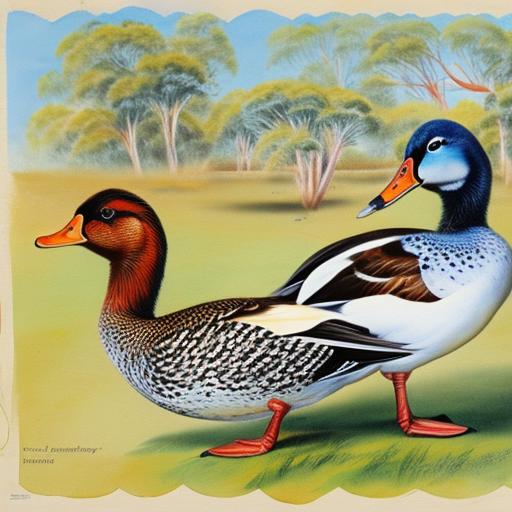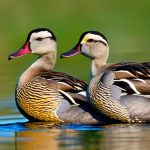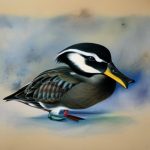Australia is home to a variety of unique and diverse duck breeds that have been developed and adapted to the country’s specific climate and environment. These breeds have been carefully bred over the years to thrive in the Australian landscape, making them well-suited for both commercial and backyard duck farming. Australian duck breeds are known for their hardiness, adaptability, and excellent foraging abilities, making them a popular choice for farmers and hobbyists alike. With their striking appearances and valuable traits, Australian duck breeds have become an integral part of the country’s agricultural landscape.
Australian duck breeds have a rich history that dates back to the early days of European settlement in the country. The introduction of domestic ducks to Australia led to the development of unique breeds that were well-suited to the local conditions. Over time, these breeds have been carefully selected and bred to enhance their desirable traits, resulting in a diverse range of duck breeds that are well-adapted to the Australian climate. From the hardy and resilient Muscovy duck to the prolific and versatile Pekin duck, Australian duck breeds offer a wide range of options for farmers and enthusiasts looking to raise ducks for meat, eggs, or ornamental purposes. With their unique characteristics and valuable contributions to the agricultural industry, Australian duck breeds continue to play a significant role in the country’s farming heritage.
Key Takeaways
- Australian duck breeds are known for their unique characteristics and adaptability to the Australian climate.
- Australian duck breeds are typically hardy, good foragers, and excellent egg layers.
- Some popular Australian duck breeds include the Australian Spotted, the Australian Call, and the Australian Settler.
- Breeding and rearing Australian duck breeds require proper housing, nutrition, and healthcare to ensure their well-being.
- Australian duck breeds are valued for their meat, eggs, pest control, and conservation of wetland habitats, making them important for sustainable agriculture and environmental preservation.
Characteristics of Australian Duck Breeds
Australian duck breeds are known for their unique characteristics and adaptability to the country’s diverse climate and environment. One of the most notable traits of Australian duck breeds is their hardiness and resilience, which allows them to thrive in a wide range of conditions. Whether it’s the hot and dry climate of the Outback or the cooler temperatures of the southern regions, Australian duck breeds have been developed to withstand the challenges of the local environment. This makes them an ideal choice for farmers looking for low-maintenance and adaptable livestock that can thrive in various conditions.
In addition to their hardiness, Australian duck breeds are also valued for their excellent foraging abilities. Many of these breeds have been selected and bred for their strong instincts for finding food in natural environments, making them efficient foragers that can supplement their diet with insects, plants, and other natural resources. This not only reduces the need for supplemental feeding but also contributes to the overall health and well-being of the ducks. Furthermore, Australian duck breeds come in a wide range of colors, patterns, and sizes, making them visually appealing and suitable for ornamental purposes as well as commercial production. Whether it’s the striking plumage of the Indian Runner duck or the distinctive appearance of the Khaki Campbell, Australian duck breeds offer a diverse array of options for farmers and enthusiasts looking to raise ducks for various purposes.
Popular Australian Duck Breeds
Australia is home to a variety of popular duck breeds that have been developed and adapted to the country’s specific climate and environment. One of the most well-known Australian duck breeds is the Muscovy duck, which is valued for its hardiness, adaptability, and excellent meat quality. Muscovy ducks are known for their distinctive appearance, with males sporting red wattles and a prominent caruncle on their faces. They are also excellent foragers and can thrive in a wide range of conditions, making them a popular choice for both commercial and backyard farming.
Another popular Australian duck breed is the Pekin duck, which is prized for its prolific egg-laying abilities and excellent meat quality. Pekin ducks are known for their large size, rapid growth rate, and calm temperament, making them an ideal choice for meat production. They are also valued for their white plumage, which makes them visually appealing and suitable for ornamental purposes as well. Additionally, the Khaki Campbell duck is another popular Australian breed known for its exceptional egg-laying abilities, with females capable of laying up to 300 eggs per year. Khaki Campbell ducks are highly efficient layers and are valued for their high productivity and adaptability to various farming systems.
Breeding and Rearing Australian Duck Breeds
Breeding and rearing Australian duck breeds require careful consideration of various factors to ensure the health, productivity, and welfare of the ducks. When it comes to breeding Australian duck breeds, it’s essential to select high-quality breeding stock with desirable traits such as hardiness, adaptability, and productivity. This involves choosing ducks that exhibit the desired characteristics and are free from any genetic defects or health issues. Additionally, proper management of breeding pairs, including providing adequate nutrition, housing, and healthcare, is crucial to ensure successful breeding outcomes.
Rearing Australian duck breeds also requires attention to various aspects such as housing, nutrition, healthcare, and environmental management. Providing suitable housing that offers protection from predators, extreme weather conditions, and adequate space for movement is essential for the health and well-being of the ducks. Additionally, ensuring a balanced diet that meets the nutritional requirements of the ducks is crucial for their growth, development, and productivity. This may include providing access to natural foraging areas as well as supplemental feeding with high-quality feeds. Furthermore, regular health checks, vaccination programs, and disease prevention measures are important aspects of rearing Australian duck breeds to ensure their overall welfare and productivity.
Uses and Benefits of Australian Duck Breeds
Australian duck breeds offer a wide range of uses and benefits for farmers and enthusiasts alike. One of the primary uses of Australian duck breeds is meat production. Ducks such as the Muscovy and Pekin are valued for their excellent meat quality, rapid growth rate, and high feed conversion efficiency. Their meat is lean, flavorful, and versatile, making it a popular choice for various culinary applications. Additionally, ducks are also valued for their egg-laying abilities, with breeds like the Khaki Campbell known for their high productivity and efficiency in egg production. Duck eggs are prized for their rich flavor and nutritional value, making them a sought-after product in the market.
In addition to meat and egg production, Australian duck breeds also offer benefits in terms of pest control and environmental management. Ducks are natural foragers with a strong appetite for insects, snails, slugs, and other pests. This makes them effective at controlling pest populations in agricultural fields, gardens, and orchards without the need for chemical pesticides. Furthermore, ducks are also valuable for their manure, which can be used as a natural fertilizer to improve soil fertility and enhance crop production. Their grazing habits also contribute to weed control and soil aeration, making them beneficial for sustainable farming practices.
Conservation and Preservation of Australian Duck Breeds

Conservation and preservation efforts play a crucial role in safeguarding the genetic diversity and heritage of Australian duck breeds. With increasing industrialization and commercialization of agriculture, many traditional livestock breeds are at risk of extinction or genetic erosion. To prevent the loss of valuable genetic resources, conservation programs are essential to maintain healthy populations of Australian duck breeds. This involves establishing breeding programs, maintaining pedigree records, and promoting awareness about the importance of preserving indigenous duck breeds.
Furthermore, conservation efforts also involve promoting sustainable farming practices that support the preservation of Australian duck breeds. This includes advocating for diversified farming systems that incorporate traditional livestock breeds such as ducks into agricultural landscapes. By integrating ducks into sustainable farming systems, farmers can contribute to the conservation of genetic diversity while benefiting from the valuable traits and contributions of Australian duck breeds.
The Future of Australian Duck Breeds
Australian duck breeds have played a significant role in the country’s agricultural heritage and continue to offer valuable contributions to farming systems today. With their unique characteristics, adaptability, and versatility, Australian duck breeds are well-suited for various purposes such as meat production, egg-laying, pest control, and environmental management. As stewards of these valuable genetic resources, it’s essential to prioritize conservation efforts to ensure the long-term viability and sustainability of Australian duck breeds.
Looking ahead, continued support for conservation programs, sustainable farming practices, and public awareness about the importance of preserving indigenous duck breeds will be crucial in shaping the future of Australian duck breeds. By recognizing the value of these unique genetic resources and promoting their use in diversified farming systems, we can ensure that Australian duck breeds continue to thrive and contribute to the country’s agricultural landscape for generations to come. As we move forward, it’s important to celebrate the diversity and resilience of Australian duck breeds while working towards their conservation and sustainable utilization in modern agricultural practices.
If you’re interested in learning more about Australian duck breeds, you might also want to check out this informative article on creating the perfect farmhouse chicken coop at PoultryWizard. It offers valuable insights into creating a comfortable and functional space for your poultry, which can be beneficial for ducks as well. Understanding the importance of a well-designed coop can help ensure the health and well-being of your ducks and other poultry.
FAQs
What are some common Australian duck breeds?
Some common Australian duck breeds include the Australian Spotted, the Australian Call, the Australian Grey, and the Australian Wood.
What are the characteristics of Australian duck breeds?
Australian duck breeds are known for their hardiness, adaptability to various climates, and their ability to forage for food. They also come in a variety of colors and patterns.
What is the purpose of Australian duck breeds?
Australian duck breeds are often kept for their eggs, meat, and pest control abilities. They are also popular as ornamental birds and for exhibition purposes.
How do you care for Australian duck breeds?
Caring for Australian duck breeds involves providing them with a suitable living environment, access to water for swimming and foraging, a balanced diet, and protection from predators.
Are Australian duck breeds good for beginners?
Australian duck breeds can be a good choice for beginners due to their hardiness and adaptability. However, proper research and preparation are still necessary before acquiring any duck breed.
Meet Walter, the feathered-friend fanatic of Florida! Nestled in the sunshine state, Walter struts through life with his feathered companions, clucking his way to happiness. With a coop that’s fancier than a five-star hotel, he’s the Don Juan of the chicken world. When he’s not teaching his hens to do the cha-cha, you’ll find him in a heated debate with his prized rooster, Sir Clucks-a-Lot. Walter’s poultry passion is no yolk; he’s the sunny-side-up guy you never knew you needed in your flock of friends!







